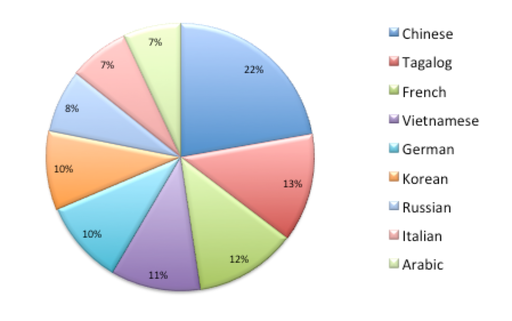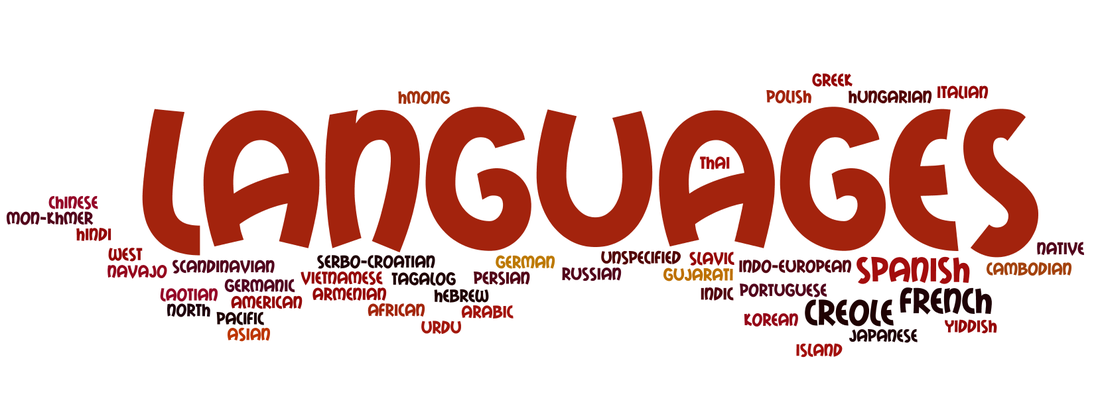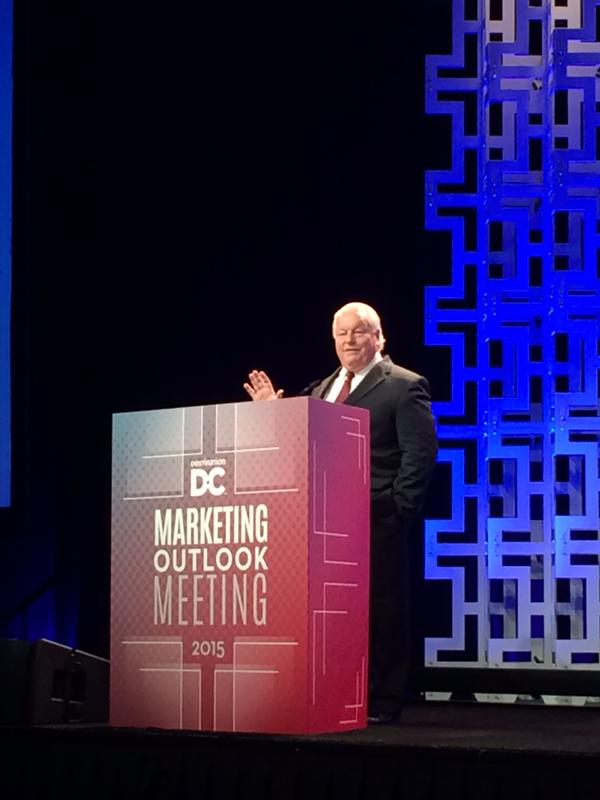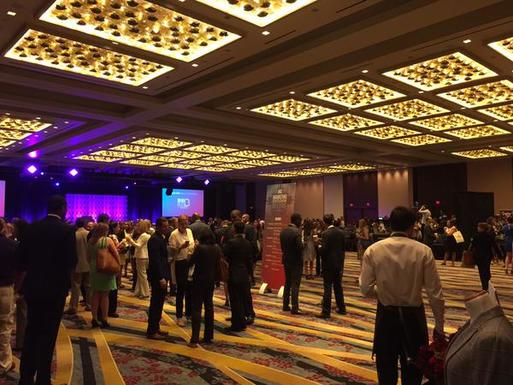|
Many nonprofits have been implementing their commitment to diversity, equity, inclusion and belonging (DEIB). One important part of inclusiveness is disability inclusion. You want to ensure that your events of all kinds are accessible to people of all abilities, whether they are a speaker or an attendee of your event. Options such as American Sign Language (ASL) interpreting, live transcripts and closed captioning are more available than ever, even to organizations on a tight budget. Amy Silver O'Leary published an article on the website of Council of Nonprofits on March 16, 2022 to explain that ASL is the first language for the people who grow up in deaf community so that providing captioning is like enforcing them to translate scripts into their first language - ASL. The article also introduces the best way to know your speakers and audience's need is to ask them. It also provides tips of finding interpreters and budgeting. For captioning, the article tells how captioning works for events; and if you ever record your events, how to use free YouTube tools and then professional captioning services to improve accuracy to get subtitled videos. To read the original, full report, please visit here. At RABI, we provide a full line of services to deaf and hard-of-hearing speakers and attendees at events, including but not limited to:
Service Format:
0 Comments
Tis the season to send out mass emails to customers and prospects hoping to cash in on the holiday spending spirit. If your business is global, you need to give a little extra thought to your holiday missives. It may be fun to send a Thanksgiving greeting to your U.S. customers, but your European clients won't be celebrating the day and your message will fall flat. Likewise trying to woo your Asian customers with Christmas deals may not be the best strategy, but many overseas cultures do make a big deal out of New Year's. Your best option is to put together a calendar of your major markets and their holidays. What should be on it? China: Singles Day, November 11. A new holiday, begun in 1993, it is now one of China's largest shopping days, far eclipsing sales for U.S. holidays. Alibaba, the online Chinese retailer, pounced on Singles Day, and in 2012 doubled the revenue U.S. companies grossed from Cyber Monday. In 2013, Alibaba racked up $2 billion in sales in the first hour of the day. With that success, it's no wonder that Alibaba is hoping to export the holiday to the U.S. and Europe. China, Vietnam, Korea: Lunar New Year and National Day holidays, late January to February. Because this is a lunar calendar festival the dates move every year within this range. This is one of the largest shopping holidays for these countries. People buy clothing, food, and luxury items to give as gifts. In 2015, Chinese tourists to the U.K. spent an average of $1,100 per person on new year's gifts. In Vietnam, sales increase up to 50% just prior to the new year's celebrations. Keep in mind that many stores close for the holidays themselves, and most of the shopping happens in the days and weeks leading up to the big celebrations. If you are a B2C company, you won't want to miss out on this holiday. India: India's largest shopping holiday is Diwali. Another lunar calendar event, it can fall in October or November. Jewelry and cars are especially popular holiday gifts, as it is believed that buying expensive items can bring good luck. Some malls report a 20% increase in traffic during the holiday, with customers often spending most of a month's salary on gifts. U.K.: While the U.K. does participate in Cyber Monday, their other big shopping day is boxing day, the day after Christmas. In 2014 they spent £2.7 billion that day alone. France: In 2014, January 7th was the highest grossing shopping day of the year, with more than double the average day's sales. France was the only European country to have its best shopping day after the holiday season. Mexico: November 18th, El Buen Fin or the anniversary of Mexico's 1920 revolution is a major shopping extravaganza. A four day event, in 2014 it grossed $14 billion. This list of holidays should get you started on thinking about when your customers will be walking the malls and surfing the net for the best deals. Personalize your email and social media campaigns and tailor them to each market, and you'll have a happier and successful holiday season.  “The single biggest problem in communication is the illusion that it has taken place.” George Bernard Shaw. Communication problems exist even when talking to people in our own language. How many times have you left a meeting thinking everyone agreed to the plan and that everyone was working on the same goals, yet, it turned out that everyone did not agree and, in fact, they were all going off in different directions? These problems are only compounded when additional languages are introduced. If your team members are participating in their non-native language, it is virtually inevitable that there will be misunderstandings. As a leader, your job is to check-in with each team member to ensure that they understand and that team members are comfortable asking questions and to checking assumptions. As a team member, it is your responsibility to speak up, ask questions, confirm you understood properly, and raise flags.  "The difference between the right word and the almost right word is the difference between lightning and the lightning bug." Mark Twain If you are giving a presentation with non-native speakers in the audience, you should really consider hiring a professional interpreter who will not just translate word-for-word, but will ensure that the entire meaning is correctly relayed to the audience. Non-professional, bilingual speakers often think they know the right word, but it can be off just enough to confuse the meaning of the sentence. Translation and interpretation is an art form that requires an understanding of the subtle differences of word choice.  Tell them what you are going to tell them, tell them, then tell them what you told them. Aristotle Most of us have heard Aristotle's advice to tell them what you're going to tell them three times. This is even more important when your information will be relayed in a second language. By translating or interpreting the ideas multiple times, not only does the information get reinforced but also ambiguity is reduced. In meetings, take the opportunity to double and triple check that what you have said was understood and reiterate the action plan to ensure everyone agrees on next steps.  "The most important thing in communication is hearing what isn't said." Peter Drucker Peter Drucker's quote demonstrates the need to be aware of cultural biases. So much of communication is reading between the lines. How we convey information can tell us as much as what is said. More problems arise when we communicate cross-culturally and nuances can get lost in translation. All cultures have conventions that as natives we are hardly aware of: body language, looks, phrasing, tone, and ways of implying without coming out and saying what we're thinking. Much of this gets lost in language conversion, so if you're working with non-native speakers you need to be much more explicit than when dealing only with one culture/language. How many times have we heard that communication is key, yet we take it for granted. We have too many meetings every day, too much email hitting our in boxes, and hundreds of texts and online forum responses to make. Slow down and be very mindful of what you're saying and how you're saying it, and check-in frequently to make sure that your communication is two-way and that all parties agrees about what was said.  In honor of world statistics day, we thought we'd share some stats that show how important it is for U.S. businesses to translate their marketing and product materials and hire interpreters for events for domestic audiences. 55 million people in the U.S. speak a language other than English at home, close to 20% of the population. 62% of those 55 million people speak Spanish or Spanish Creole. Of the remaining 21.9 million people, 20%, or roughly 11 million of them speak 9 different languages. The balance of people, 10 million, speak 28 different languages (or derivatives of those languages.)
So the next time you tweet out to your followers or upload a video, think twice about just releasing it in English. There are a whole lot of people out there who may want what you're offering, if only you'd advertise it in their language. Source: 2006-2008 American Community Survey. Wouldn't you love to increase attendance at your conferences and trade shows? One way to do that is to reach out to the international community. Research shows that only 2 of 10 exhibition attendees are from other countries. By putting in place the right global strategy you can tap a whole new market. Join RABI CEO Yvette Fang for an informative webinar about how to increase international attendance at your trade shows and conferences. Yvette will walk you through:
Simultaneous or consecutive interpretation? Do you know the difference and how to choose what you need for your project? Simultaneous interpreters usually sit in a sound booth where they can hear the speaker through their headphones. As the speaker talks, the interpreters listen to the speaker and speak the second language into a microphone which transmits their words wirelessly to headsets that audience members wear. It's easy to accommodate more than one interpreted language at an event, with the audience members able to choose which language they want to listen to. One of the major benefits of using simultaneous interpreters is that the event is not interrupted for the interpretation. In fact, audience members who speak the same language as the presenter may not even realize that the event is being interpreted. Additionally, those audience members who are listening to the interpretation can follow along with the speaker's gestures and facial expressions in real time. Consecutive interpreters are often on stage with the speaker, or if it's a small event, they sit at the table. They listen to what the speaker says, and then at the end of a sentence or paragraph, they interpret it for the audience. One of the benefits of consecutive interpretation is that because the interpreter has time to listen to the speaker's complete thought, the interpretation is often more accurate than with simultaneous interpretation, where the information flows at a much faster rate. The downside to consecutive interpretation is that it can significantly increase the time of the event. Which should you choose? It depends on the type of event and your budget. For simultaneous interpretation, you usually need at least two interpreters and for long events, potentially more. Simultaneous interpretation requires intense concentration and most interpreters can work for about 15 minutes before they need to be relieved by a colleague. In contrast, consecutive interpreters can remain on stage with the speaker for the entire event. SI is usually the best choice if you need to have multiple languages interpreted or when hosting conferences or other large events. Consecutive interpretation is often a better choice for highly scientific and medical information. Because consecutive interpreters have time before their interpretation starts, they are able to take detailed notes that improve their accuracy. CI is also well suited to small meetings, one-on-one meetings, interviews, and press conferences, where the SI equipment may feel like an intrusion and time is not as much of a factor. Decision Time If you need interpretation services, reach out to a professional, qualified agency, and provide as much information as you can about the reasons for the interpreter, the language(s) involved, and the duration and size of the event. The agency should be able to guide you toward the best solution to meet your needs. If you're looking for an interesting, rewarding career choice that will never be outsourced, and you have a facility with languages, you may want to look into becoming an interpreter or translator. The U.S. Bureau of Statistics reports that the translation industry is set to grow 42% between 2010 and 2020. The Economist reports that companies are recognizing the need to have their websites localized into more and more languages and that Microsoft has even begun producing its product manuals in Maya and Luxembourgish.
In addition, with the continued expansion of global trade, the huge influx of Asian tourists, and the increase in business visits to the U.S., more and more companies need highly skilled, professional interpreters at their conferences, corporate meetings, and on conference calls. If you are fluent in at least two languages, you may want to consider becoming a certified interpreter. Being bilingual is not enough of a background to be a professional, you need to be a native speaker in the language you will interpret into, and you need to take classes in the craft of interpretation to fully understand and carry out the responsibilities of the job. In addition to highly developed language skills, you will need the following soft skills:
Translation and interpretation can be highly rewarding careers that will enable you to meet people from all over the world and learn about wide-ranging subjects, keeping you constantly on your toes. If you think you have the skills and temperament to succeed, it's worth going after. RABI partners and our local D.C. team were pleased to attend the Destination D.C. marketing outlook 2015 event. Destination D.C. hosted more than 500 tourism, trade, and local business members for a look at how the tourism and convention business is set to grow in D. C. over the next few years. We met Destination D.C.'s President and CEO, Elliott Ferguson, who stopped by our table at the event. Great speakers and sessions made the event fun and informative. Some of the fascinating facts that we learned include:
The takeaway from the event? Huge growth in international tourism, especially millennials, represents a major opportunity for savvy companies. Successful businesses should provide support at their events for participants for whom English is not their first language, and they should also localize their marketing materials and social media posts to reach potential visitors in their languages via the marketing media that their audience consumes most. We can help you provide the best experience and outreach to your market. RABI offers a premier events solution to help plan and organize global events and international conferences and ensure seamless communication through advanced services and technologies. Services we offer include:
Visit redblueint.com/events.html for more information about our events solution and to download our case study, Simultaneous Interpretation: a Commercial Property Company.
Your interpreter arrives at your event ready to go. She is a professional, has years of experience doing similar events, and knows her stuff. You, on the other hand, are an unknown quantity. The interpreter needs to discover quickly if you are comfortable presenting in front of a large audience. Do you largely make up your speech as you go along, do you read it verbatim, or are you somewhere in between? Do you interact a lot with your audience or not? Every speaker is different and every day on the job for an interpreter is an exciting new challenge.
Here are some tips for how to work with your interpreter: 1. If you are a native English speaker and your audience speaks Spanish, do not try to rely on your high school Spanish skills to make a connection with the audience. Even if you are fairly fluent in Spanish, you should do your whole speech in English and let your interpreter do his job. It can be confusing for both the audience and the interpreter if you switch back and forth. Plus, your second language skills may not be as good as you think they are, which could cause confusion and potentially be embarrassing. 2. Limit the amount of jargon, acronyms, and abbreviations in your speech. This should be true anyway, unless you're speaking in front of a group that is really immersed in your world. Not only is the audience unlikely to follow jargon and acronyms, but your interpreter will have a difficult time getting your meaning across. At the very least, try to provide a list of industry or organization specific terms to your interpreter before the event, so she is ready when you start peppering your speech with them. 3. If your interpreter is in a sound booth, be sure you are talking into the microphone at all times, but not getting too close. If you have a fixed microphone on stage, like behind a podium, and you walk away, the interpreter may not be able to hear you. Likewise, if you suddenly, boom into your microphone, you might knock off your interpreter's ears! 4. If you have a sign language interpreter, do not walk in front of him! You wouldn't believe how often this happens. If you do it, your audience won't see what you're talking about. 5. Speak normally. Don't try to compensate for your interpreter. You have hired a professional whose job it is to keep up with you and work at your pace. If it's consecutive interpretation, than yes, you will need to pause and let your interpreter interpret, but you don't need to slow your speech. Same goes for simultaneous interpreters. They will keep up with you. You need to focus on speaking at a pace that your audience can follow. Professional interpreters will have no problem keeping up. 6. Jokes should be limited, or, as with jargon, you should at least supply your interpreter with your jokes ahead of time. Humor is notoriously hard to convey in a different language. Often the interpreter will have to completely re-work jokes to get the point across. Interpreters, in desperation, have even been known to tell the audience, "he told a joke, you should laugh now," when it's impossible in the moment to appropriately interpret it. If you share your jokes with your interpreter ahead of time, she can adjust it to the foreign language and everyone's amusement. By keeping these six tips in mind, you will be sure to have a great experience with your interpreters. Professional interpreters have extensive training and are great at thinking and reacting to unexpected situations. So relax, concentrate on your audience and on your delivery, and let your interpreters do their job. Are you someone who thinks corporate meetings are a boondoggle, dreamed up by people who want a party and don't care about wasting valuable time and money?
SAP's CEO Bill McDermot argues in this CNBC OpEd that corporate meetings can be highly productive and extremely influential in improving employee moral and productivity, even helping companies to turn themselves around. Additionally, they inject money into the local economies where they are held, providing a positive ripple effect to local businesses. McDermont's right, you can accomplish far more with people when you're all in the same room. But, when you bring together employees from all over the world to meet each other and get aligned with corporate strategy, you're likely to run into some language barriers as well. In order to foster productive discussions and make sure that everyone's voice is heard and that everyone leaves the meeting feeling valued and knowing what direction to take in their corner of the business, you should have materials translated and hire interpreters. Don't make employees use their second or third language skills. This can lead to misunderstandings and a failure to properly communicate. By having linguists on hand to help your overseas employees navigate the meeting, you'll ensure full participation and money well spent. |
Author
Archives
March 2024
Categories
All
|
Photos from : : Ys [waiz] : :, bjahind, fabola, MattysFlicks, @sage_solar, LoS, Traducción e Interpretación, Kyle Taylor, Dream It. Do It., _gee_, keepitsurreal, One Way Stock, Airviewsphotos, GotCredit, efile989, Benoit cars, ** RCB **, stephiesal853, Francisco Anzola, Highways England, ITU Pictures, VIPevent, leoplus, Karsten Bitter, Jolante, jobstop11, Nguyen Vu Hung (vuhung), jurvetson, mikefats, YooSan, sandrafdzh, roland, mikecogh, y entonces, Donald Lee Pardue, Gatorgoon, daniel0685, BÜNDNIS 90/DIE GRÜNEN, rick, {Guerrilla Futures | Jason Tester}, mikecogh, markyharky, amslerPIX, jo.sau, IAEA Imagebank, lisa-skorpion, Toronto Public Library Special Collections, Wootang01















 RSS Feed
RSS Feed
